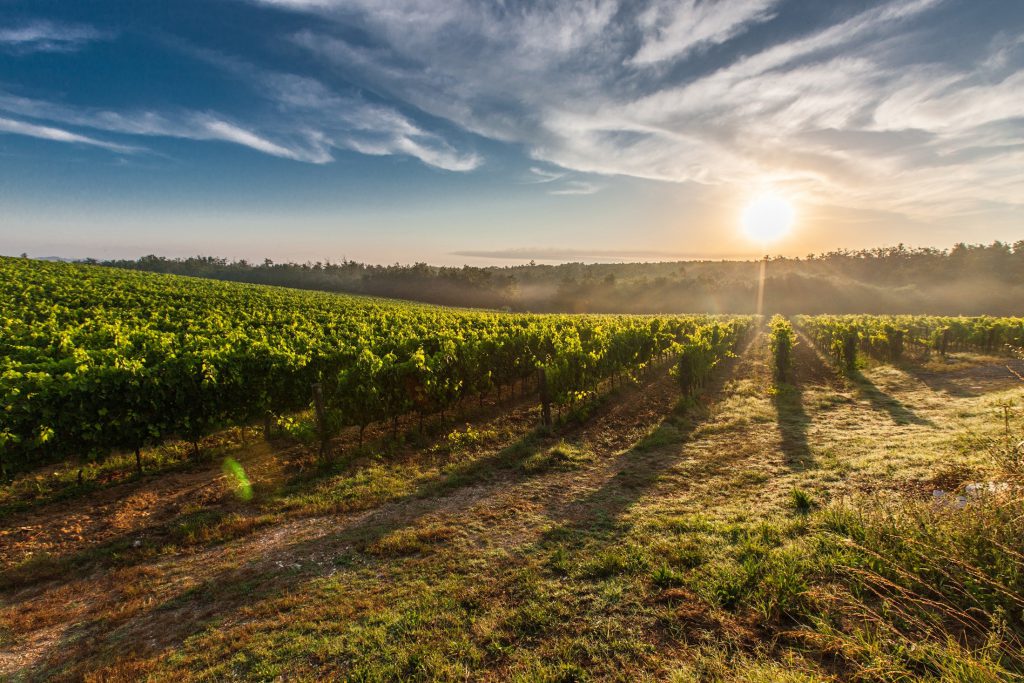xtraWinexperience continues, landing in Tuscany. Known for being the cradle of Renaissance and home to world famous brands: Gucci, Cavalli, Ferragamo. Tuscany is also well known for its wines and the beauty of its hills. Bucolic sceneries that have reached international fame.
The role and contribution of wine-production to the local economy as well as the culture are, however, lesser known.
Wine-making: A brief historical overview
The area between the Arno and the Tiber was the territory of the Etruscans or Tuschi in the pre-Roman era. The name of the Region in those times was Etruria or Tuscia. Subsequently, from Tuscia the name of Tuscany was formed.
The viticulture tradition of Tuscany dates back to the time of the Etruscans, with over 2,000 years of prestigious history that still keeps this region at the top of the oenology world today.
The rolling hills of Tuscany are the splendid environment in which the vine is perfectly at ease, providing the grapes for the production of great wines, as well as a highly respectable production in terms of quantity.

With the decline of the Empire, there was an apparent abandonment of the Tuscan vineyards. However, already during the Middle Ages wine production had been relaunched, facilitated by the monastic orders. This is evidenced by documents from the Badia a Coltibuono, very active around the 9th century, which details the culture of wine-making.
A clear recovery of viticulture had therefore begun around the year 1100 AD, when the vineyards began to grow denser, even in the centre of Florence, where the church of S. Maria delle Vigne already stood. That church is now known as Santa Maria Novella.
World-renowned Tuscan grapes and locations
Tuscany is the known kingdom of Sangiovese, a grape variety native to this region but also found in Emilia Romagna. Sangiovese occupies more than half of the area under vine. However, the fact that Sangiovese is native to the region doesn’t necessarily means that it is easy to grow. Rather, not only it has a medium-late ripening period, it only expresses itself at its best if the location guarantees perfect exposure and sunshine, and an ideal micro-climate and altitude.

Other local grape varieties include Trebbiano Toscano, Malvasia Bianca Lunga or Tuscan Malvasia, Vernaccia di San Gimignano, Ansonica and Canaiolo Nero.
Turning our focus to wines, among the most renowned is Chianti DOCG. Created by Baron Bettino Ricasoli, it was among the first wines to cross borders following our emigrants to America; exported in the typical flasks, it became so famous it created the very image of this wine in the world. Even today, it is by far the most produced wine in Italy. It ought to be clarified that Chianti DOCG is different from Chianti Classico. The difference lies in the percentage of Sangiovese used to make these two wines.
Another world-famous wine is Brunello di Montalcino DOCG, made from Sangiovese. Made of red grapes, its dark colour has earned it the name “Brunello” (dark). Production of Brunello is limited to Montalcino (Siena). Traditionally, Brunello goes through an extended period of maturation, during which it acquires its flavour and its colour. It follows fermentation and aging, which usually takes place in barriques. The aging process lasts between two and three years, followed by one or two years (in case of a Riserva) in bottle.
Tuscan locations that are inextricably linked to the world of wine are Montepulciano, San Gimignano and Carmignano, with their respective DOCGs, Bolgheri and others, where other very prestigious wines are produced.
Along the Tyrrhenian coast and on the island of Elba itself, vermentino, ansonica and aleatico are cultivated, the latter is also made into fine passito versions.
Further down the coast, towards the province of Grosseto, we find other wines such as the DOCG Morellino di Scansano, from the Morellino vine, another name for Sangiovese, with a lively ruby colour and scents of violets and blackberries.
In addition to the wines of the very important Denominations of Origin, Tuscany has risen to the forefront of world oenology with a number of Supertuscans, wines of great class, soft and elegant, obtained mainly from cabernet sauvignon and cabernet franc, merlot and partly syrah and pinot noir. The Supertuscan wines are internationally renowned because they are made with non-indigenous grapes like Cabernet Sauvignon, Cabernet Franc, Merlot, Syrah and Pinot Noir.
Finally, wine production from this region has a common denominator, Vin Santo and Vin Santo Occhio di pernice, produced in numerous denominations and types that differ in terms of residual sugar; the former is mainly made from Tuscan Trebbiano, the latter from Sangiovese.

Interviste esclusive dal mondo del vino ed approfondimenti da chi fa del vino una ragione di vita, di business e di cultura.









